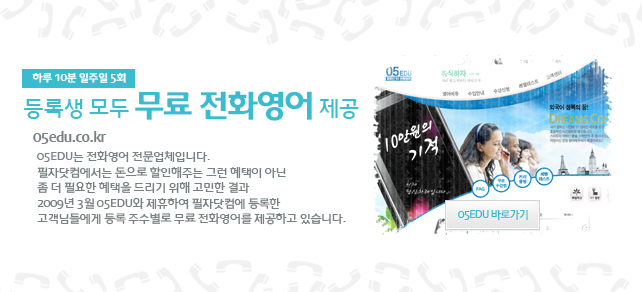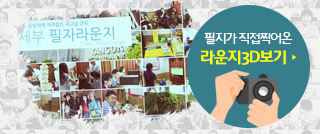Reading Strategies
Reading Efficiently by Reading Intelligently
Whether they're project documents, trade journals, blogs, business books or ebooks, most of us read regularly
as part of our jobs, and to develop our skills and knowledge.
But do you ever read what should be a useful document, yet fail to gain any helpful information from it? Or, do
you have to re-read something several times to get a full understanding of the content?
In this article, we're looking at strategies that will help you read more effectively. These approaches will help you get the maximum benefit from your reading, with the minimum effort.
Think About What You Want to Know
Before you start reading anything, ask yourself why you're reading it. Are you reading with a purpose, or just for pleasure? What do you want to know after you've read it?
Once you know your purpose, you can examine the resource to see whether it's going to help you.
For example, with a book, an easy way of doing this is to look at the introduction and the chapter headings. The introduction should let you know who the book is intended for, and what it covers. Chapter headings will give you an overall view of the structure of the subject.
Ask yourself whether the resource meets your needs, and try to work out if it will give you the right amount of
knowledge. If you think that the resource isn't ideal, don't waste time reading it.
Remember that this also applies to content that you subscribe to, such as journals or magazines, and web-based RSS and social media news feeds - don't be afraid to prune these resources if you are not getting value from
some publishers.
Know How Deeply to Study the Material
Where you only need the shallowest knowledge of a subject, you can skim material. Here you read only chapter headings, introductions, and summaries.
If you need a moderate level of information on a subject, then you can scan the text. This is when you read the
chapter introductions and summaries in detail. You can then speed read the contents of the chapters, picking
out and understanding key words and concepts. (When looking at material in this way, it's often worth paying
attention to diagrams and graphs.)
Only when you need full knowledge of a subject is it worth studying the text in detail. Here it's best to skim the
material first to get an overview of the subject. This gives you an understanding of its structure, into which you
can then fit the detail gained from a full reading of the material. (SQ3R is a good technique for getting a deep
understanding of a text.)
Read Actively
When you're reading a document or book in detail, it helps if you practice "active reading" by highlighting and
underlining key information, and taking notes (member-only article) as you progress. (Mind Maps are great
for this). This emphasizes information in your mind, and helps you to review important points later.
Doing this also helps you keep your mind focused on the material, and stops you thinking about other things.
Know How to Study Different Types of Material
Different types of documents hold information in different places and in different ways, and they have different
depths and breadths of coverage.
By understanding the layout of the material you're reading, you can extract the information you want efficiently.
Magazines and Newspapers
These tend to give a fragmented coverage of an area. They will typically only concentrate on the most interesting and glamorous parts of a topic - this helps them boost circulation! As such, they will often ignore less interesting information that may be essential to a full understanding of a subject, and they may include low value content to "pad out" advertising.
The most effective way of getting information from magazines is to scan the contents tables or indexes and turn directly to interesting articles. If you find an article useful, then cut it out and file it in a folder specifically covering that sort of information. In this way you will build up sets of related articles that may begin to explain the subject.
Newspapers tend to be arranged in sections. If you read a paper often, you can quickly learn which sections are useful, and which ones you can skip altogether.
Reading Individual Articles
There are three main types of article in magazines and newspapers:
- News Articles - these are designed to explain the key points first, and then flesh these out with detail.
- So, the most important information is presented first, with information being less and less useful as the
- article progresses.
- Opinion Articles - these present a point of view. Here the most important information is contained in the introduction and the summary, with the middle of the article containing supporting arguments.
- Feature Articles - these are written to provide entertainment or background on a subject. Typically the most important information is in the body of the text.
If you know what you want from an article, and recognize its type, you can get information from it quickly and
efficiently.
Make Your Own Table of Contents
When you're reading a document or book, it's easy to accept the writer's structure of thought. This means that
you may not notice when important information has been left out, or that an irrelevant detail has been included.
An effective way to combat this is to make up your own table of contents before you start reading. Ask yourself
what sections or topics you are expecting to see in this document, and what questions you want to have
answered by the end of the text.
Although doing this before you start reading the document may sound like a strange strategy, it's useful,
because it helps you spot holes in the author's argument. Writing out your own table of contents also helps
you address your own questions, and think about what you're expecting to learn from the text.
Use Glossaries with Technical Documents
If you're reading large amounts of difficult technical material, it may be useful to use or compile a glossary.
Keep this beside you as you read.
It's also useful to note down the key concepts in your own words, and refer to these when necessary.
Further Reading Tips
- The time when you read a document plays a role in how easy the reading will be, and how much
- information you'll retain.
- If you need to read a text that is tedious, or requires a great deal of concentration, it's best to tackle it
- when you have the most energy in the day. Our article, Is This a Morning Task?, (member-only article), helps you work out when this is, so that you can schedule your reading time accordingly.
- Where you read is also important. Reading at night, in bed, doesn't work for many people because it
- makes them sleepy (which means that you may not remember the information). Everyone is different,
- however, so read in a place that's comfortable, free of distractions, and that has good light - this is
- important even if you're reading from a screen.
- It can be helpful to review the information when you've finished reading. When you're done, write a
- paragraph that explains, in your own words, what you just learned. Often, putting pen to paper can help
- strengthen your recall of new information, so that you retain it more effectively.
Key Points
If you want to read more effectively, identify what you want to learn from each resource you read, and know
how deeply you want to study the material. And, consider "active reading" by making notes and marking-up the material as you go along. It's also useful to know how to study different types of material.
Making your own table of contents before you read material, and using glossaries for technical resources, are
other useful reading strategies.
Remember that it takes practice to develop your reading skills - the more you use these strategies, the more
effective you'll become.


- ЁЄ[ЧЪРкЖѓПюСі] 6Пљ 16РЯКЮХЭ ЧЪРкЖѓПюСі КЏАцЕШ РЬПыОШ...
- ЁЄИЖДвЖѓ ОюЧаПЌМіЛ§ЕщРЛ РЇЧи ЧЪРкДхФФРЬ СЄМКВЏ ...
- ЁЄОюЧаПЌМіЛ§КаЕщ И№ЕЮ ИЖДвЖѓ ФЁХВ ИР С§ ЧЪРк Дх...
- ЁЄОюЧаПЌМіЛ§КаЕщРЛ ИЖДвЖѓ ЧЧРк ИРС§ ЧЪРк ЖѓПюСі...
- ЁЄИЖДвЖѓ ЧЪРк ЖѓПюСіРЧ ЛяАуЛь ЦФЦМПЁ ОюЧаПЌМіЛ§...
- ЁЄИЖДвЖѓ ОюЧаПЌМіЛ§ЕщРЧ ФЁХВ ИРС§ ХНЙцБт ЧЪРк ...
- ЁЄОюЧаПЌМіЛ§ЕщРЬ РЮСЄЧб ЧЧРк ИРС§ ЧЪРк ИЖДвЖѓ ...
- ЁЄОюЧаПЌМі Л§ЕщРЬ УЃДТ ЧЪИЎЧЩ ЛяАуЛь ИРС§РК? ИЖ...
- ЁЄИЖДвЖѓ ОюЧаПЌМі Сп ФЁХВ ИРС§РЛ УЃРИНХДйИщ ЧЪ...
- ЁЄОюЧаПЌМі Л§ЕщРЬ РЮСЄЧб ЧЪИЎЧЩ ЧжЧУЗЙРЬНК!! ЧЪ...
- ЁЄЧЪИЎЧЩ ОюЧаПЌМіЛ§ЕщРЬ УЃДТ ЛяАуЛь ИР С§РЛ Мв...
- ЁЄИЖДвЖѓ ОюЧаПЌМі Сп ЧбБЙНФ ОчГфФЁХВРЬ Л§АЂГДй...
- ЁЄЧЪИЎЧЩОюЧаПЌМі Сп ИРРжДТ ЛяАуЛьРЬ ИдАэ НЭДйИщ...
- ЁЄИЖДвЖѓ АЁСЗ ПЌМі Сп ЧЧРкАЁ Л§АЂГДйИщ ЧЪРкДх...
- ЁЄЧЪИЎЧЩ ЧіСі РЏЧаПјПЁМ ПфСђ ЧжЧб ИРРжДТ ФЁХВ ...







 ЧЪРкДхФФ ОпАЃЛѓДу ПРЧТ
ЧЪРкДхФФ ОпАЃЛѓДу ПРЧТ 12ГтПЌМг МвКёРкИИСЗ 1РЇ
12ГтПЌМг МвКёРкИИСЗ 1РЇ
 ГЛАд ИТДТ ОюЧаПј УЃБт
ГЛАд ИТДТ ОюЧаПј УЃБт
 ИЎОѓ ЧаБГ ЙцЙЎБт
ИЎОѓ ЧаБГ ЙцЙЎБт
 СжИЛПЁ ГЛАЁ ОЕ КёПыРК?
СжИЛПЁ ГЛАЁ ОЕ КёПыРК? УжАэАЁМККё РЬКЅЦЎ СёБтБт
УжАэАЁМККё РЬКЅЦЎ СёБтБт
 ЧіСіПЁМЕЕ ЧЪРкДхФФ!
ЧіСіПЁМЕЕ ЧЪРкДхФФ! ЧіСіПЁМ АЁДЩЧб
ЧіСіПЁМ АЁДЩЧб









 ЧЪРк ЦЏБо Ч§ХУ! ФСНУОюСі МКёНК
ЧЪРк ЦЏБо Ч§ХУ! ФСНУОюСі МКёНК







































